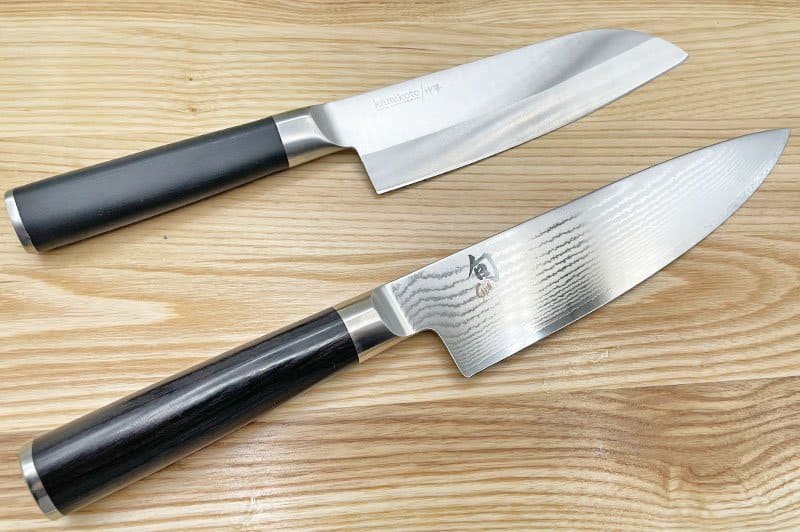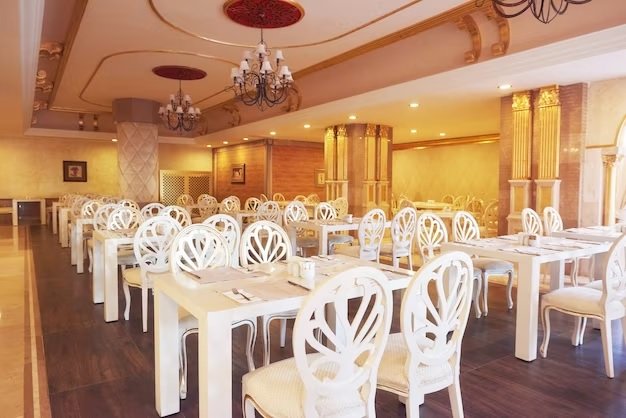It’s undeniable that you need the right culinary tools to chop your way into preparing a delicious meal. However, the choice of such wonderful kitchen equipment is not always straightforward.
The market is full of different brands promoting their unique culinary items. As a wise chef, you should be unfazed by the abundant choices and select what suits your style.
In the case of culinary tools, you will agree that knives are indispensable assets. Hence, this article shortlists two popular choices to simplify your research — the gyuto and santoku. Both are kitchen knives that suit different cooking purposes.
To know which knife you should bring to your kitchen, scroll down and make an informed decision.
A Quick Glance at Both Kitchen Knives
The global kitchen knives market has a steady growth of 8.6%. Hence, you will observe a wide range of online and offline items.
Here’s brief information about both the popular options:
The Gyuto
These knives are traditional chef cutting tools. They have a pointed tip that is tailormade for accurate slicing. Take a look at the knife’s salient features:
- Long, curved blades
- Tall heel
- Double bevelled edges
- Finger bolster
- Length varies from 6” to 14”
The Santoku
These knives have a straight blade that is suitable to cut deep lines. You can use them ideally for chopping purposes. Here are the general characteristics:
- Slightly rounded tip
- Wide and comparatively short
- Linear blade shape
- Single edges
- Length varies from 5” to 7”
The Comparison
Simplification is the key to easy understanding. Hence, you will get a clear idea from a well-defined comparison table.
Table: Kitchen knives comparison
| Parameter | Gyuto | Santoku |
| Ideal Use | Chopping fish, meat, vegetables | Finely cutting vegetables and meat |
| Weight | Heavy | Light |
| Protection | Finger bolster | Less protection due to the absence of a bolster |
| Level of control | Less | High |
| Durability | High | Low |
| Material of handle | Wood or resin | Wood |
| Cost | High | Comparatively low |
These parameters might have given you a good idea about your preferred choice. A gyuto stands out in comparison if you do not require ultra-fine cuts.
On the contrary, the santoku is less expensive but has a blunt tip in comparison. So, you will need regular sharpening of the edges in the case of a santoku.
Which One to Choose?
If you want long-range finger protection, gyutos are an excellent choice. These knives have thicker blades, making them more durable and robust.
In addition, you will feel this knife is easy to handle due to its firm grip. Hence, if you feel all these aspects are vital to your cooking style, it is better to choose gyutos. If your style and requirement are inclined to a more delicate chopping, santokus can seem a good choice.
Summing Up
If you have the budget and do not mind carrying a slightly heavier knife, gyutos can be a good choice. These knives resemble traditional western chef tools and offer high durability.
On the contrary, a santoku has a linear blade shape, which suits fine chopping. Also, you can carry this knife with you all day. Finally, the choice boils down to your personal preference.
Still, gyutos offer more versatility and value for money. You can chop a wide range of food items with these knives. So, now that you know the features of each knife, it is time to buy one that fits perfectly in your kitchen.





